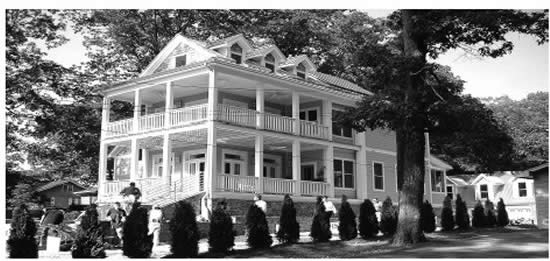June 2003
Heating And Cooling System Relies On Copper Tubing Buried In The Yard
When a consortium of urban planners, builders and environmental groups began designing and building the demonstration Zero-Energy Home in Atlanta, they went to two extremes-the sun and the earth-for their primary energy sources.

Most homes depend on power from utilities such as electric and gas companies to heat water, operate appliances, light the darkness, warm occupants in winter and cool them in summer. In this home, however, power is provided by solar photovoltaic and solar water-heating panels installed on the roof, as well as by an innovative heat pump system that taps into the earth itself.
The Zero-Energy Home is a demonstration project promoted by the U. S. Department of Energy's "Building America" program, which partners with home builders and civic groups to develop innovative, energy-efficient residential housing. Sponsors in this project include the Copper Development Association (www.copper.org), the information, market and technical development arm of the copper, brass and bronze industries in the USA, whose members provided the tubing and other copper materials for the home.
"Environmentally oriented programs like this are a perfect fit for us," says CDA spokesman Ken Geremia. "Copper is the most recycled and recyclable building material you can use, and self-sustaining or 'green' construction projects are the way of the future in homebuilding, so it makes sense for us to be here."
Although the solar panels and geothermal heat pump draw their energy from very different sources, and are based on today's sophisticated technology, both systems utilize the same basic, elemental material-copper-for optimum heat-transfer performance. More than 225 feet of copper tubing was buried in the home's back yard for the heat pump, and additional copper tubing and wiring went into the rooftop solar systems.
The tubing is used to circulate refrigerant liquids that act as a heat-transfer medium. In the solar panels, sunlight heats the liquid in enclosed copper coils that loop through-but do not mix with-the water in the home's domestic hot-water system. In the direct exchange heat pump, provided by American Geothermal DX (www.amgeo.com), the liquid is pumped down several lengths of copper tubing buried below frost depth, where the surrounding earth remains at a constant temperature of about 56 degrees F. The liquid in the tubing stabilizes at this temperature and is pumped back to the surface, where the heat pump puts it to work preheating the home in winter and cooling it in summer.
The holy grail of environmentally efficient home construction is "net zero-energy," a term referring to structures that produce as much-or more-energy than they consume. According to Ed Pollock of the U.S. DOE residential buildings research program, the Zero-Energy Home is the first project in the Building America program to actually achieve that goal. ![]()
